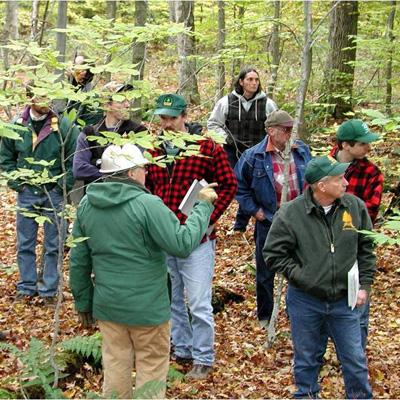Modeling Effects of Uneven-aged Silviculture on Wildlife Habitat and Sawtimber Production

Scientists have described the natural history, range, and habitats for over 300 species of forest wildlife found in New England. The U.S. Forest Service Northeast Decision Model incorporated much of the information into a computer-based assessment tool that helps landowners compare several management alternatives for their lands. Yet, this tool only generalizes changes after a silvicultural treatment. Landowners need better predictions about changes in sawtimber volume and wildlife habitat characteristics in uneven-aged stands.
Computer simulation models allow forest managers to forecast changes in forest conditions, including effects of management on numbers and sizes of trees, sawtimber volume, and key attributes important to wildlife. NSRC researchers used measurements from seven northern hardwood stands under uneven-aged silviculture to update an old simulator. New growth functions allow more accurate prediction of changes in tree diameters, how many trees might die, and how many new ones regenerate. The simulator also predicts amounts and changes in vertical structural diversity, seed production, coarse woody debris, crown canopy cover, and cavities in living trees.
Using this simulator, managers can evaluate different treatment options for periods of 10 through 25 years. Resulting information will help them decide how to best treat a stand to serve the interests of a landowner. It has applicability for uneven-aged northern hardwood stands throughout the Northern Forest region. Maintaining biologically diverse and economically viable forests and wildlife communities into the future helps to insure a rich array of values that sustain people’s lives and enhance their quality of living.
Download printable version [PDF]
Download full final report [PDF]
